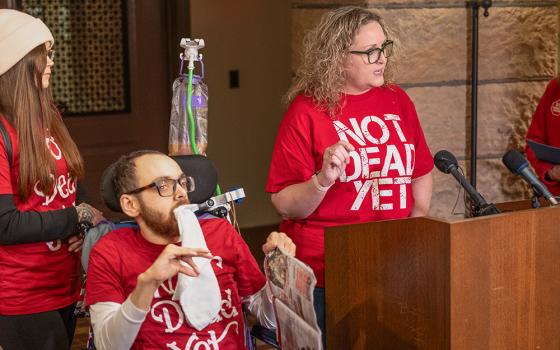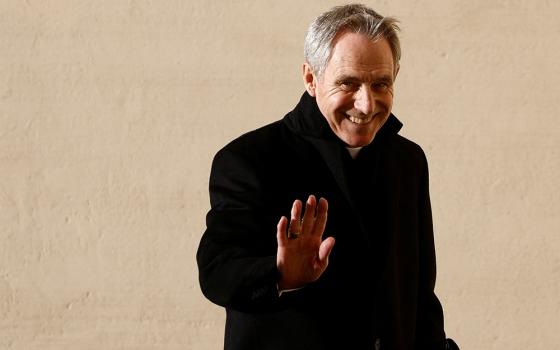ROME -- A consistory, the event in which a pope creates new cardinals, is supposed to have a festive air. New cardinals bring family, friends and supporters to Rome, to see the sights and to enjoy one another’s company. The afternoon of the consistory is the only time the doors of the Apostolic Palace are flung open to the general public, giving the place the feel of a block party.
This week, however, it’ll be difficult to just let the good times roll, because the Vatican hosting the 22 new cardinals Benedict XVI will create on Saturday once again looks like the gang that can’t shoot straight.
Consider the headlines that have dominated the Italian press, with echoes around the world, in just the last 72 hours:
- “Plot against the Pope: Dead within 12 Months”
- “Pope is Isolated amid War in the Vatican”
- “Money Laundering, Priests Investigated: The Silence of the Vatican”
- “Gays, Scandals and Even Masonry: The Church Fears Deep Throat”
Not since a 2009 cause célèbre created by the pope’s decision to lift the excommunications of four traditionalist bishops, including a Holocaust denier, has the Vatican been gripped by such an intense wave of scandal – coupled with the inevitable finger-pointing, both public and private, about who’s to blame.
Before proceeding, let’s stipulate two points.
First, some of this is the usual Italian melodrama, not necessarily to be taken seriously. Speculation about Machiavellian plots is a favorite indoor sport in Italy, in every walk of life. It goes on about secular politics, business, even sports, and over the last few days it’s just been the Vatican’s turn.
Second, there’s little atmosphere of crisis inside the Vatican itself. When you walk into most Vatican offices, you’ll find people calmly going about their business. Personnel are aware of the storms brewing around them, and many are worried about what it all means, but it’s not as if panic is in the air.
That said, the present mess can’t just be dismissed, for one key reason: Underneath it all lie real Vatican documents, leaked by insiders who knew full well what affect they would have. This “war of the photocopies,” as one Italian commentator has dubbed it, is thus the latest sign that all is not well in the Vatican’s internal governance.
Let’s briefly review recent events.
First came revelation of private letters written in 2011 by Italian Archbishop Carlo Maria Viganò to Pope Benedict XVI and to the Secretary of State, Cardinal Tarcisio Bertone. In them, Viganò complained of corruption and cronyism in Vatican finances, and of an internal campaign of defamation against him and his reforms.
Today the pope’s nuncio, or ambassador, in the United States, Viganò was the number two official at the Government of the Vatican city-state at the time.
Pointedly, Viganò named names in this correspondence about who was supposedly out to get him. His villains included Monsignor Paolo Nicolini in the Vatican museums, and a well-connected lay advisor named Marco Simeon, who’s reportedly close to Bertone. The language in the letters was nothing short of incendiary; Viganò accused Nicolini, for instance, of “vulgarity of behavior and language” at the Vatican museums, along with “arrogance and presumption regard his coworkers,” not to mention various shady financial dealings.
At the moment, Italian papers are full of hints that Viganò might return to Rome, ready to air all sorts of other Vatican dirty laundry. (That’s the reference to “gays, scandals and masonry” in the headline quoted above.)
Next up has been a series of accusations directed at the Institute for the Works of Religion (IOR), the so-called “Vatican Bank.”
An Italian television program called “The Untouchables” has broadcast sensational reports charging that IOR recently transferred millions of Euro to foreign banks, to evade Italian controls, and that it’s refused to cooperate with various Italian inquests, including a probe into the 1982 death of Italian financier Roberto Calvi, known as “God’s Banker” for his close Vatican ties. It also cited an internal Vatican memo suggesting that a new anti-money laundering law decreed by Benedict XVI contains a massive loophole, making suspect transactions before April 2011 exempt from scrutiny.
The Vatican has systematically denied those charges, but naturally the rebuttals have not laid suspicions to rest.
Most recently, an Italian paper set off another earthquake by publishing an anonymous letter, written in German, which quoted Italian Cardinal Paolo Romeo of Palermo about an alleged plot to kill Benedict XVI within twelve months, and to replace him with Cardinal Angelo Scola of Milan. The letter had been passed along to the pope by retired Colombian Cardinal Dar'o Castrillón Hoyos.
A Vatican spokesperson dismissed that report as “madness.”
Yet for the record, the documents in each case are authentic. By now, the Vatican has acknowledged that the Viganò letters, the money laundering memo, and the anonymous letter about an anti-papal plot are all real – while insisting that in each case, the contents are either exaggerated or erroneous.
In other words, the Vatican is leaking like a sieve.
There’s intense debate about who’s behind these leaks, with Italian papers pointing to a “mole hunt” inside the Vatican. There seems greater consensus about whom to blame for the overall state of affairs: Italian Cardinal Tarcisio Bertone, the Secretary of State, who’s supposed to be the “Prime Minister” of the Vatican, the guy responsible for making the trains run on time.
As Italian commentator Sandro Magister has put it, the mess makes Bertone, 77, look like “the Prime Minister of a government that doesn’t work.”
On Friday, all the members of the College of Cardinals will gather with Pope Benedict XVI for a “day of prayer and reflection” ahead of the consistory. It remains to be seen whether the cardinals will use that occasion to confront the elephant in the room, pushing Benedict, gently and respectfully, to get things under control.
There are three reasons they might want to do so – which is not the same thing, of course, as predicting that they will.
First, some of these cardinals have fish to fry back home, and the present Vatican meltdown isn’t helping. Timothy Dolan of New York, for instance, is currently involved in a high-stakes tug of war with the Obama administration over insurance mandates. It would be nice if a powerful and well-connected papal ambassador were on the scene in Washington to help navigate these tensions, but that's obviously not the situation.
Second, perceptions of intrigue have overshadowed what ought to be a couple of good news stories for the Vatican. Last week, the Vatican co-sponsored a summit on the sexual abuse crisis, calling for a proactive global response and committing itself to reforms. Right now, Vatican personnel are moving heaven and earth to bring the institution into compliance with international standards of financial transparency; probably at no other point in its history has the Vatican been so thoroughly committed to cooperation with external, secular regulatory bodies. In a normal news cycle, those storylines might recalibrate impressions of the Vatican and the church in a positive key; at the moment, they’re competing with, and basically losing to, narratives of scandal.
Third, the harm done by the Vatican’s woes is felt all over the Catholic world. When a real bomb explodes, damage is most intense closest to the blast zone. When a PR bomb explodes in Rome, however, those closest to the scene often don’t feel it, but Catholics in far-off locales can be heavily scarred. Senior Vatican personnel often move in a bubble, surrounded by subordinates and well-wishers, insulating them from the effects of negative public impressions. Catholics who live out in the real world aren’t so lucky. They have to face the fallout in the media, among their friends, and around the water cooler. Getting things under control thus isn’t exclusively, or even primarily, about helping the pope or the Holy See. It’s about not putting unnecessary obstacles in the path of the Catholic rank-and-file, who just want to live their faith and, maybe, share it with others.
On Friday, the cardinals are supposed to be talking about the “new evangelization.” Perhaps taking a hard look at the Vatican’s disarray might be a place to start.




